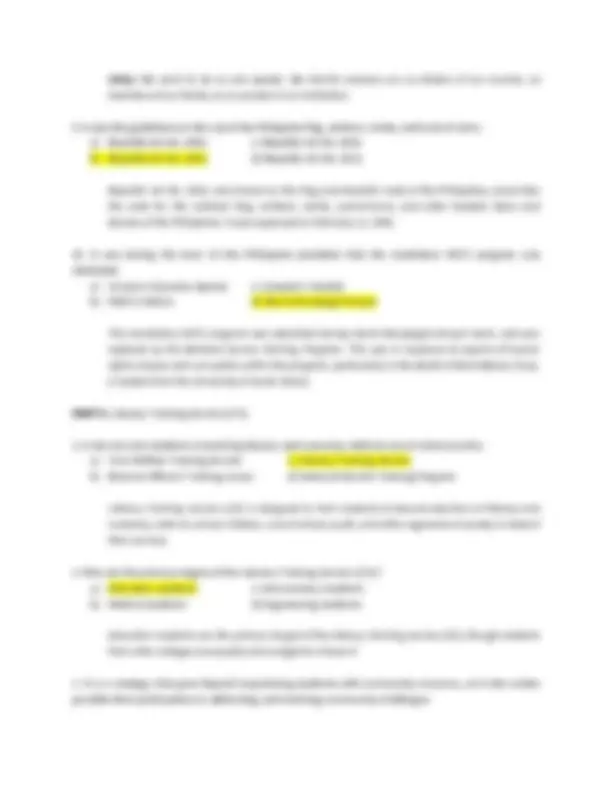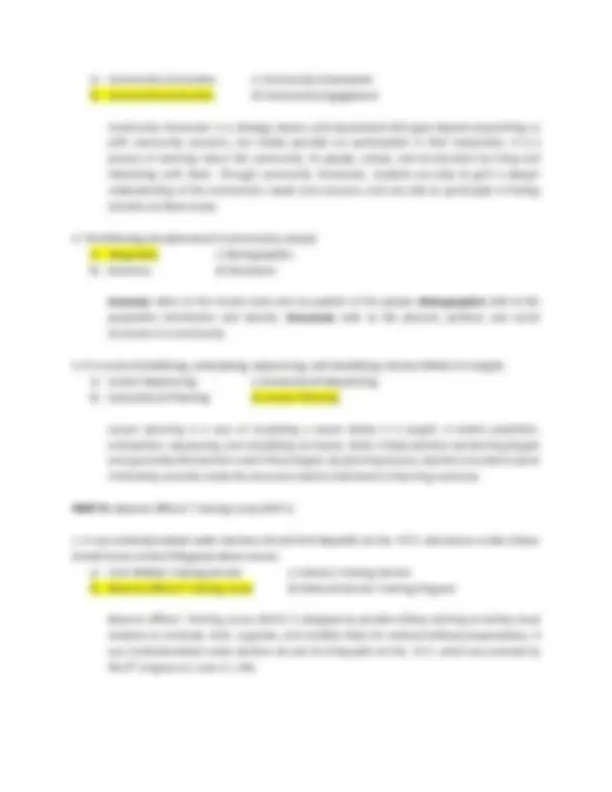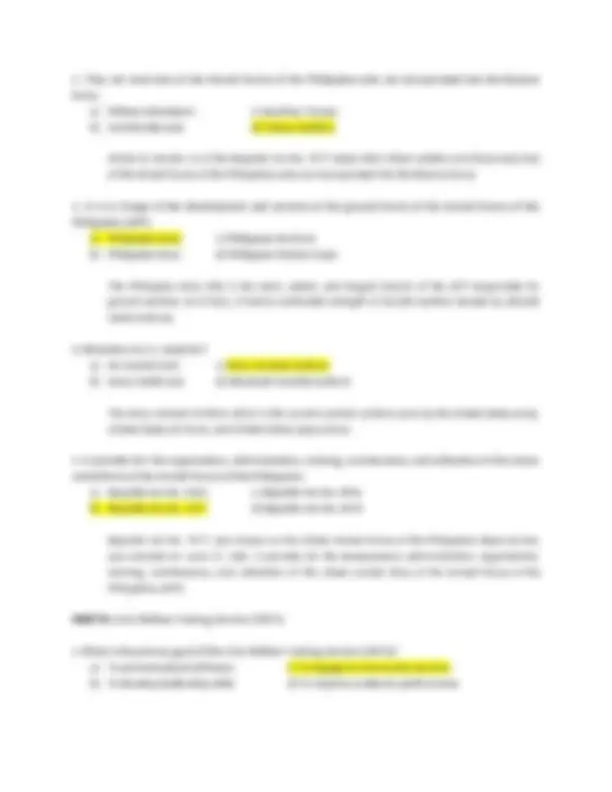





Study with the several resources on Docsity

Earn points by helping other students or get them with a premium plan


Prepare for your exams
Study with the several resources on Docsity

Earn points to download
Earn points by helping other students or get them with a premium plan
Community
Ask the community for help and clear up your study doubts
Discover the best universities in your country according to Docsity users
Free resources
Download our free guides on studying techniques, anxiety management strategies, and thesis advice from Docsity tutors
A quiz about the national service training program (nstp) and its components, including civic welfare training service (cwts), literacy training service (lts), and reserve officers' training corps (rotc). It covers various aspects of these programs, such as their goals, implementation, and history.
Typology: Exercises
1 / 7

This page cannot be seen from the preview
Don't miss anything!




PART I. National Service Training Program (NSTP)
a) Community Conversion c) Community Assessment b) Community Immersion d) Community Engagement Community immersion is a strategy, device, and requirement that goes beyond acquainting us with community concerns, but makes possible our participation in their (re)solution. It is a process of learning about the community, its people, culture, and environment by living and interacting with them. Through community immersion, students are able to gain a deeper understanding of the community's needs and concerns, and are able to participate in finding solutions to these issues.
Andrés Bonifacio's leadership and dedication to the cause of Philippine independence exemplified the spirit of community cooperation and volunteerism that is at the heart of the concept of bayanihan.